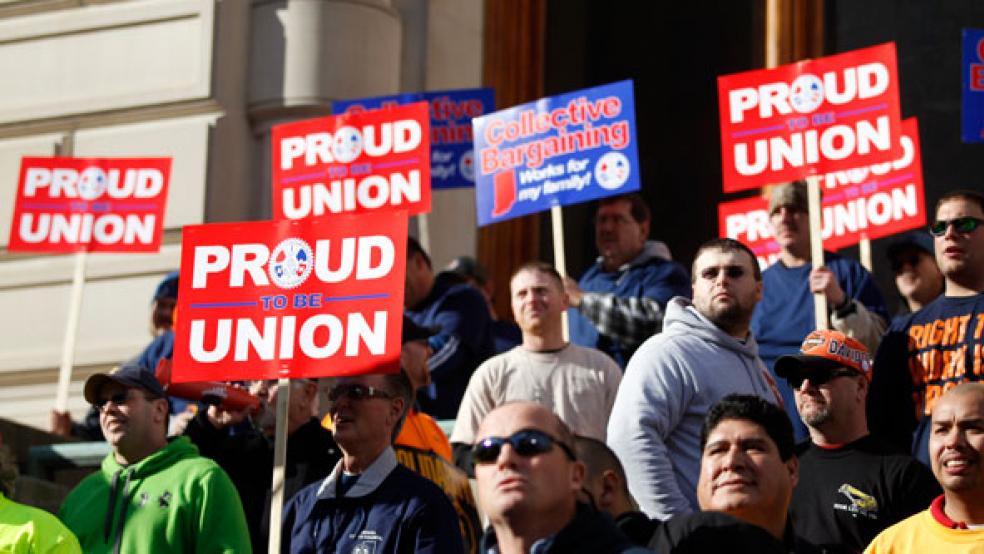Unions lost 398,000 members last year and that has a profound impact on both politics and the economy. It’s a setback for Democrats who rely on organized labor during political campaigns and a challenge for wage growth, according to public records.
The Bureau of Labor Statistics released the latest membership figures Wednesday morning, showing a decline from 14.76 million in 2011 to 14.36 million in 2012. Just 11.3 percent of the workforce belongs to a union, the lowest level since the 1930s.
Unions have dealt with falling membership rolls as manufacturing became a less prominent part of the economy in recent decades. The bargaining rights of public employees have recently become hot-button issues, with concerns about unfunded pensions and Republican-led rollbacks in states like Ohio and Wisconsin.
Democratic State Governors have also bucked traditional party politics California Gov. Jerry Brown and fellow Democratic state lawmakers overcame union objections and approved reforms on Friday that limit benefits, raise the retirement age, and increase the personal contributions made into the pension system by state employees. New York Gov. Andrew Cuomo, also a Democrat, enacted changes in March for future state retirees that are estimated to save $80 billion over the next 30 years.
The AFL-CIO reacted with a somber but optimistic statement about a movement struggling with decline.
“Collective action through unions remains the single best way for working people to effect change,” AFL-CIO spokesman Josh Goldstein said Wednesday. “But our still-struggling economy, weak laws and political as well as ideological assaults have taken a toll on union membership, and in the process have also imperiled economic security and good, middle class jobs.”
Here are five big takeaways from the government figures released today:
* Union power is highly concentrated, reducing their ability to impact elections around the country by going door-to-door to neighbors. Half of all members hail from just seven states: California, Illinois, Michigan, New Jersey, New York, Ohio, and Pennsylvania. And yes, all those states went for Obama in 2012.
* Government employees are eroding as a union base. As private sector membership declined, organized labor depended more on representing teachers, police, firefighters, and other government employees. But more than half of last year’s drop—224,000—came from the public sector.
* Unions face a cash crunch. Fewer members lead to lower revenues. Using Labor Department figures, individual union dues average $634 in 2010. The loss of almost 400,000 members in a single year is equal to a revenue shortfall of more than $250 million.
* This hurts wage growth. The average union member earned $942 a week, or $201 more than the average American worker. As union jobs disappear, gigs with lower wages replace them.
* Union members are getting old and approaching retirement. More than half of all union members are older than 45. As those 7.7 million Americans retire, they will be replaced by a generation that is much less unionized than their parents.




